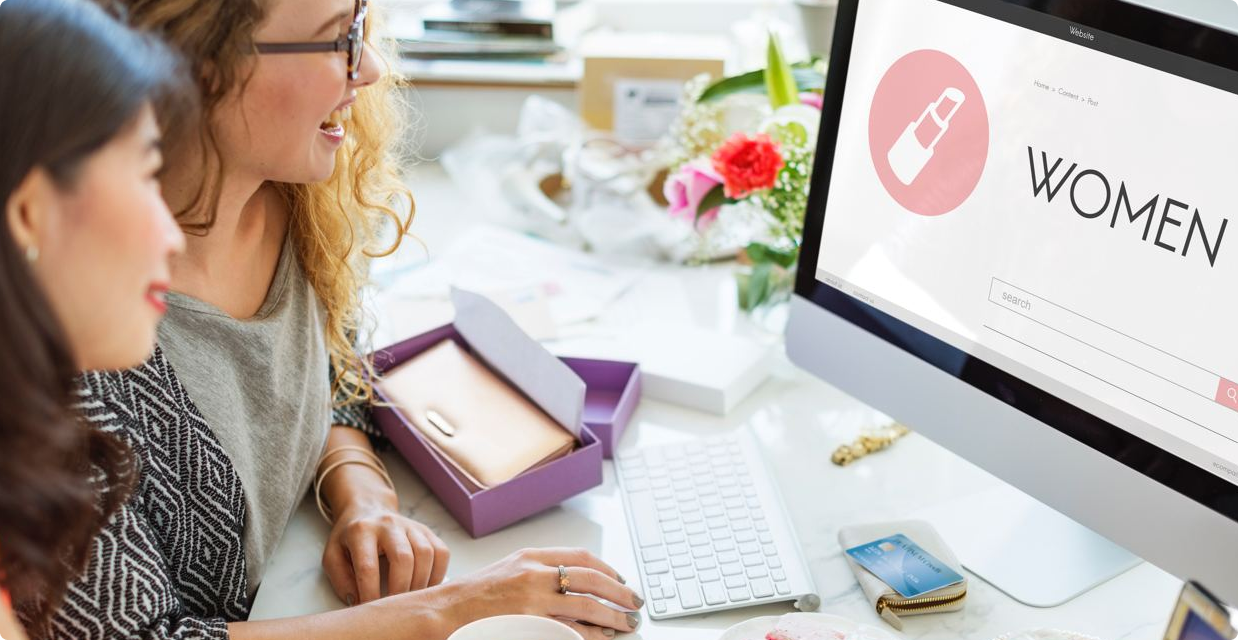The appearance of online store has a strong influence on customers behavior: it can either inspire the shoppers to stay on the website and browse pages or move to another ecommerce store with more convenient design and navigation. However, development of a well-designed website can be challenging. Retailers should find a right balance among frequently competitive priorities to ensure clear product visuals, convenient navigation, attractive website content and design that positively impacts the mobile shoppers.
According to the recent online shopping surveys, more than a half of consumers are satisfied with buying online on desktops, at the same time the third of total number of respondents emphasized the ability to promptly find the products on the website as the key factor for them during online shopping. The next preferred factor was user experience (about 30%) and effective checkout (10%).
Among other factors significant for work with retailer’s website, users outlined the relevant search results as the key factor when searching for items on the online store. In addition, they highlighted the ability to quickly view the item details when clicking on a product picture, product filters and few number of clicks the user needs to make to reach the product page from category navigation.
Regarding product pages, approximately the third of buyers consider product reviews as the most significant factor, when a bit less of shoppers emphasize the ability to enlarge the item picture, following by those who appreciate the multiple views of a product.
The provided results show the anticipation of customers to get the same shopping experience as in a physical store when buying online, having the features the retailers included to their websites, providing the clients with basically the same product information as they used to have.
For this reason, providing such visual components to the online stores as 360 spin product photos, augmented reality and videos are beneficial, as the customers can easily see whether the clothes fit them or imagine how one or another interior detail will look in their apartments.
However, the most crucial moment when purchasing is checkout. If this process appears to be unclear or overloaded, there is a chance that the customer can change his mind, refuse to complete the purchasing and leave your website. About 18% of consumers marked the quick checkout as the key factor, when a bit less of them chose the limited number of steps (not more than 4) to be significant to make a purchase.
Moreover, the design of the website should be in line with mobile app design, marketing materials, email and advertising campaigns, thus enhancing the brand recognition among customers and raising the store conversions.
Web design tips to boost your store conversions
1. EASY NAVIGATION & CHECKOUT
Ecommerce website navigation and checkout process should involve as few steps as possible. Moreover, completing transactions without disruption is also crucial, together with avoiding confusion among customers – the website should contain only the important product details without any extra content (such as various elements, menu items and calls for action), as it can mislead the shoppers from their way to finish the purchasing.
2. RESPONSIVE DESIGN
Taking into account the growing popularity of shopping using mobile gadgets, retailers need to be sure that their websites have responsive design, which means the site size fits any device the customer may use. The first option to achieve this goal, is to develop a website for mobile devices prior to the desktop version. An alternative is to use PWA – instruments to create online stores with app-like experiences, the website that the shopper can use as an app without a necessity to install it on the mobile phone. As most of the retailers note, a responsive website design is very crucial in terms of conversion rate improvement.
3. VISUAL DESIGN
Visual part of the website must distinguish your brand from others and be remarkable – use the particular color for different call-to-action elements (such as Buy or Add to cart buttons), make them bigger and distinctive, together with trying to put as many product pictures on a detail page as possible. A wide variety of images will help the shoppers not to be confused and examine the items from every side, successfully completing the purchasing.
4. USER-GENERATED CONTENT
User-generated content can significantly enhance a brand spread – by making posts and reviews on social media about the goods they purchased, real customers bring confidence and reliability to the online store.
5. INTERACTIVE ELEMENTS
One more way to attract customers is to give them the opportunity to visualize having the product before they buy it, imitating the physical store experience. The instruments for this are:
- Augmented reality: Ability to take any product from the store and try it on (f.e. clothing or shoes) or imagine it in a particular environment (f.e. furniture or interior objects) using special technologies.
- Video: Engaging the shopper with the product, video description of an item or showing the piece of clothing on a model can significantly improve the user experience.
- 3D images: Giving customers the opportunity to see the products from all angles and move the pictures how they want, assist them to learn the item better and definitely encourage to finish the purchasing.






